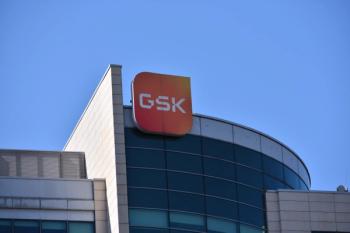
- BioPharm International-05-01-2014
- Volume 27
- Issue 5
Stuck in Neutral
The CMO industry's value proposition is limiting its market penetration.
The contract manufacturing industry isn’t gaining market share. Could it be that the CMO business model is out of synch with the current realities of the bio/pharmaceutical industry?
PharmSource recently completed an analysis of the dose CMO industry’s share of new FDA approvals (1). Our research found that of the 90 new drug applications (NDAs) approved in 2013, 32 (36%) used CMOs for dose manufacture. This was below the 2004-2014 10-year average of 43%.
Outsourcing for both new molecular entities (NMEs) and non-NMEs was below the long-term average. Among NMEs, 41% were outsourced, compared to 47% for the 10-year average. For non-NMEs, just 32% were outsourced, well below the 10-year average of 40%.
The share of NDA approvals that are outsourced can vary widely from year to year. The share of NMEs that have been contract manufactured has ranged from just 37% in 2011 to 59% in 2008. Contract dose manufacturing of non-NMEs has ranged from 31% in 2011 and 2013 to as high as 60% in 2012.
Nevertheless, the data clearly suggest that contract dose manufacturing has largely plateaued in terms of its share of new product approvals at the 45% level over a sustained period. Why can’t the CMO industry break through to manufacture a greater share of drugs?
Rooted in an old reality
Contract manufacturing arrangements for products approved in 2013 were negotiated in the 2008-2010 period. That was the middle of the global financial crisis, when heightened concerns about risks of all types may have driven companies to keep manufacturing in-house where they could more directly control things. The 2008-2010 period, however, was also the beginning of a new reality for the bio/pharmaceutical industry, and it is likely that stagnation of contract manufacturing may be rooted in the inability of CMOs to respond to that new reality.
The old bio/pharmaceutical industry model was characterized by high volume products and generous annual price increases that fueled high profit margins and relegated cost-of-goods and inventory management to minor considerations. The new bio/pharmaceutical business model that has emerged in the past five years must incorporate smaller volume products that are expensive to manufacture but that face increasing resistance from the governments and insurance companies that are expected to pay for them. Further, the industry has become more global, with bio/pharmaceutical companies looking beyond their traditional markets to boost sales in emerging markets.
High costs of legacy facilities
Most CMOs are not positioned to deal effectively with the changing industry realities. Nearly all CMO manufacturing sites are older facilities built by global bio/pharmaceutical companies to fit the old industry business model. They are expensive to operate thanks to their large footprints, bulky HVAC systems, and need for indirect labor to move products and commodities from one processing suite to a holding area to the next processing suite. They require high unit volumes to spread the fixed costs to acceptable levels.
Further, most CMOs are not very flexible when it comes to scheduling production. They insist on locking down production schedules at least three months in advance, and don’t have the flexibility to adjust schedules for a particular client product in the face of market demand changes. Increasingly, bio/pharmaceutical companies are trying to produce to demand rather than to inventory and need more flexible manufacturing operations.
The traditional CMO proposition offers bio/pharma companies the opportunity to avoid the capital costs of building their own facility, and the fixed operating costs of running a GMP-compliant operation. This rationale still has currency for smaller companies, but it doesn’t really hold much sway with global bio/pharmaceutical companies—and many mid-size companies—that are generating record levels of cash flow. They are looking for manufacturing operations that can serve a global supply chain in a flexible and cost-effective manner.
A new model
The fact is that if one were to launch a CMO business today, its manufacturing assets would look nothing like the facilities that CMOs currently operate. Rather, a CMO built to fit the current bio/pharmaceutical business model would have the following characteristics:
- Facilities would be purpose-built with much smaller footprints and more flexible configurations.
- The equipment would be geared to smaller batch sizes; would incorporate continuous/multi-step processes like the new equipment that can blend, granulate, and tablet in a single unit; would use disposable or dedicated contact parts; and would be highly automated.
- Sophisticated control and planning systems would enable short production scheduling and supply-chain management practices that would support just-in-time production.
- These smaller, appropriately equipped facilities would be distributed in a global network that reflected the places where bio/pharmaceutical companies are trying to sell product (i.e., in emerging markets as well as North America and Western Europe). This would deliver significant cost savings to bio/pharmaceutical companies in the form of reduced logistics costs, tariffs, and other import-related expenses.
It is unlikely that we will see any CMOs moving toward this model in the foreseeable future. There will be significant upfront investment costs in establishing a network of such sites, and most CMOs currently generate barely enough cash flow to cover the capital investment needs of their current facilities.
However, establishing such a contract manufacturing network with a partner, say, one or more bio/pharmaceutical companies or a national government trying to establish a local bio/pharmaceutical infrastructure, could work. We know that bio/pharmaceutical companies are looking for manufacturing partners in a lot of third-tier markets like Algeria and Vietnam; we get inquiries about possible CMOs in such countries regularly.
Reference
1. PharmSource, CMO Market Penetration as Evidenced by Outsourced NDA Approvals, 2014 Edition (PharmSource, 2014).
About the Author
Jim Miller is president of Pharmsource Information Services, Inc., and publisher of Bio/Pharmaceutical Outsourcing Report, tel. 703.383.4903,
Articles in this issue
over 11 years ago
Accelerated Stability Modelingover 11 years ago
Demand for New Vaccines Spurs Innovationover 11 years ago
Standardizing Practices for Disposablesover 11 years ago
Clinical Syringe Packages Increase Productivityover 11 years ago
Linking Drug Shortages and Quality Metricsover 11 years ago
Improving Protein Expression with Novel Systemsover 11 years ago
Integrated Single-Use Sterile and SIP Connector Provide Flexibilityover 11 years ago
India's Developing Market Offers OpportunitiesNewsletter
Stay at the forefront of biopharmaceutical innovation—subscribe to BioPharm International for expert insights on drug development, manufacturing, compliance, and more.





